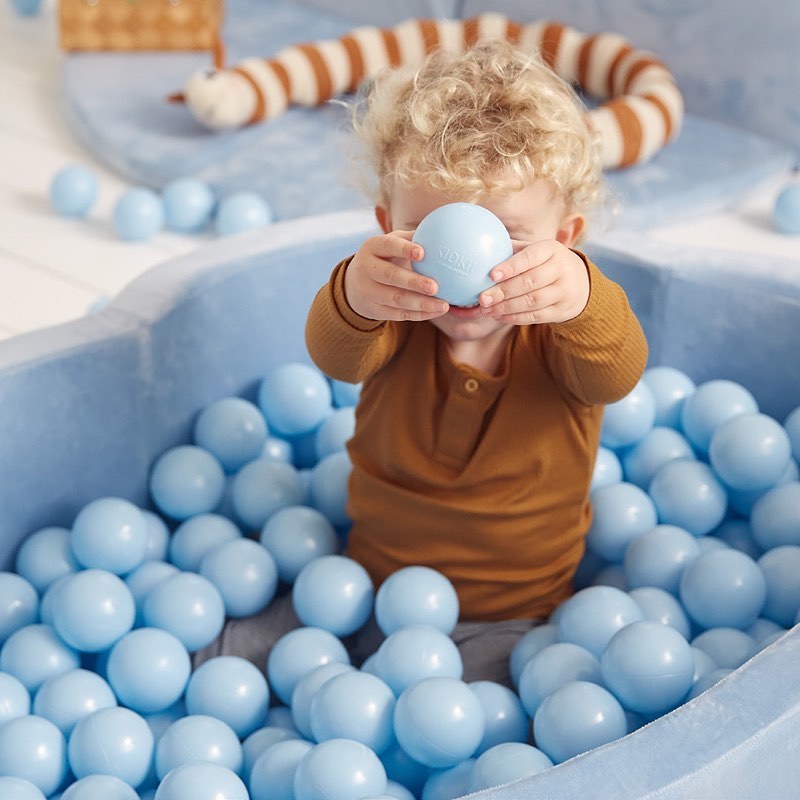A Toy Safe For Your Kids - KIDKII LDPE Balls

Plastic is everywhere and we are probably unable to avoid it completely anytime soon. It is a commonly used material for water bottles, kitchen products and toys for children. However, not all plastics are safe. Some plastics contain harmful chemicals and can be dangerous and others are safer for kids.
Have a closer look and you will notice a symbol at the bottom, top or side of each plastic object, ranging from 1 to 7, within a triangle. Plastic numbers 2, 4 and 5 are the safer. Whereas plastic numbers 1, 3, 6 and 7 should be avoided.
Plastic #1 – PET or PETE stands for polyethylene terephthalate, a plastic resin and a form of polyester. PETE plastic should not be reused because cleaning detergents and high temperatures can cause chemicals to leach out of the plastic. Plastic #1 is only intended for one time use.
Plastic #2 – High-density polyethylene (HDPE) is a polyethylene thermoplastic made from petroleum. HDPE is hard, opaque and can withstand slightly higher temperatures.
Plastic #3 – Polyvinyl chloride (PVC) is a thermoplastic polymer. PVC contains phthalates to help soften the plastic. One of the plastics to avoid as it releases toxins through air, skin contact or ingestion.
Plastic #4 – Low-density polyethylene (LDPE) is a thermoplastic made from petroleum. It can be found translucent or opaque. It is flexible and tough. It is considered one of the safest plastics has no known health concerns. It doesn’t leach chemicals into food or beverage and can be recycled.
Plastic #5 – Polypropylene (PP) is a thermoplastic polymer. It is strong, tough, has a high resistance to heat and acts as a barrier to moisture.
Plastic #6 – Polystyrene (PS) is a petroleum-based plastic. It can either be hard or used in the form of styrofoam.
Plastic #7 –Others including polycarbonate, bioplastic and acrylic.
Now, let’s look into the details of Plastic #3 & Plastic #4.
More on Plastic #3
Plastic #3 (PVC) is often labeled as the ‘poison plastic’ because it contains numerous toxins which it can leach throughout its entire life cycle. PVC contains phthalates to help soften the plastic and BPA which is a hormone disrupting chemical. DEHA is also found in PVC plastics. They cause problems with the hormonal system, affect the children’s development, immune and endocrine system, and also cause cancer.
Babies can be exposed to the chemicals that leach from PVC through the air, skin contact, and even ingestion in the case of toys. So do look for labels such as ‘PVC free,’ ‘BPA free,’ and ‘phthalate-free.
Common baby products made with PVC are strollers and car seats, toys, labels, stickers, mattress covers, furniture, bibs and aprons, children’s swimming pools, inflatables, drinking straws, food storage containers and many others.
More on Plastic #4
Low-density polyethelene (LDPE) is a generally safe plastic variety that has no known health risks associated with use. The biggest benefit to using LDPE in baby products is that it is safe for them to use and won’t cause issues with chemical contamination over time. This is because it is chemically stable and does not leach chemicals into food or beverage, the air, or through contact. This plastic is also easy to clean, impact-resistant, and holds up to the rough play of babies and toddlers without having to worry about it falling apart too quickly. There is also no trace of any BPA or phthalates inside of LDPE because they are not used during the manufacturing process.
Common baby products made with LDPE are disposable liners for baby bottles, playground equipment like slides and swing seats, playmats, bibs and lunchboxes.
Our KIDKII balls are made with Plastic #4 – LDPE. They are safe for babies and does not leach chemicals through the air, skin contact, or even when you child put it in their mouth. A toy made safe for your little ones and family.
